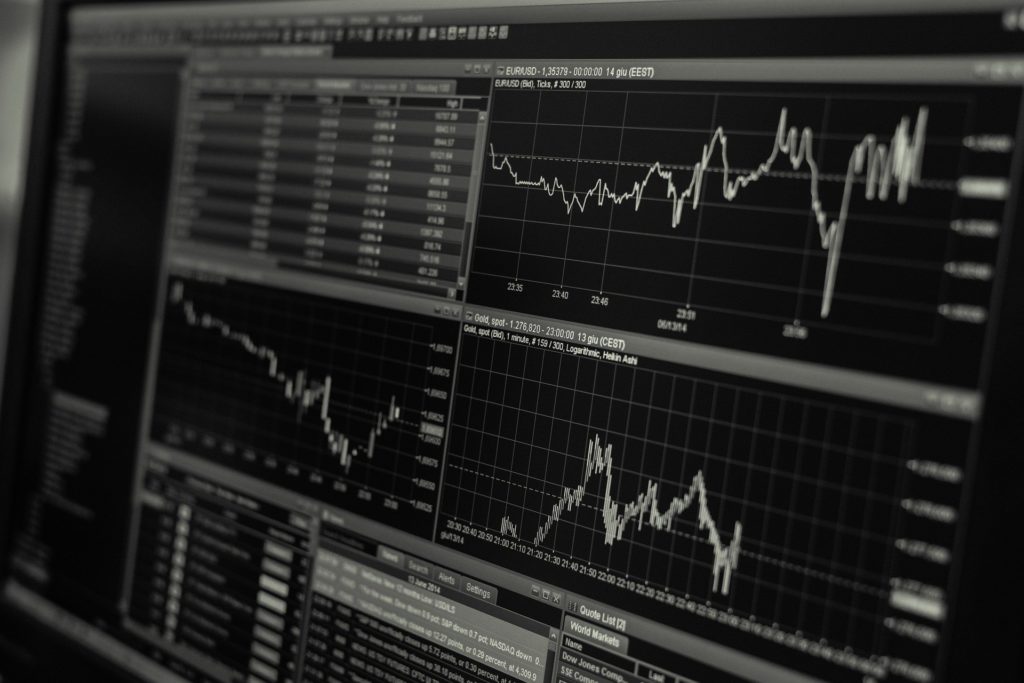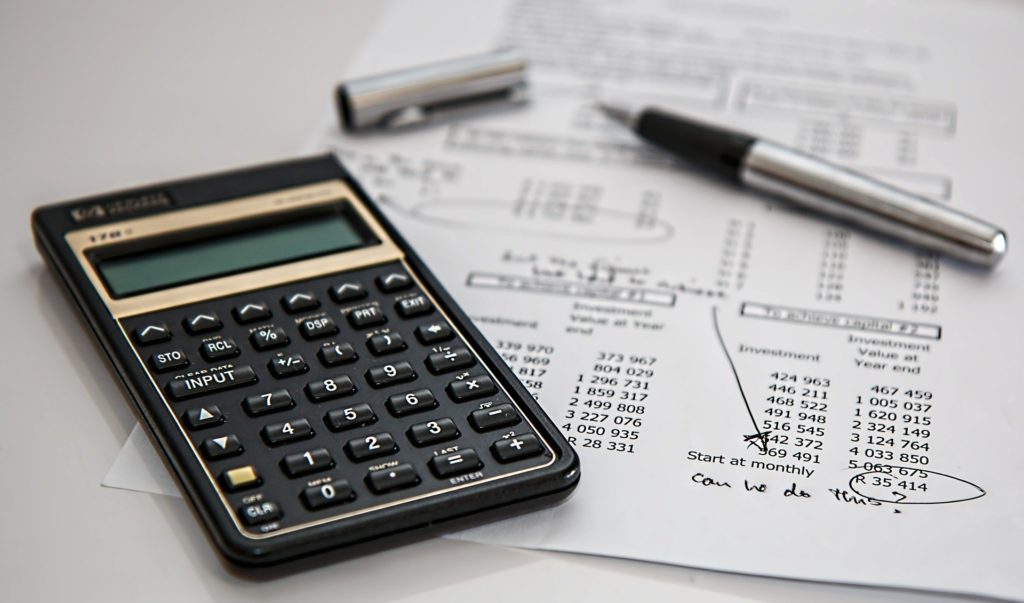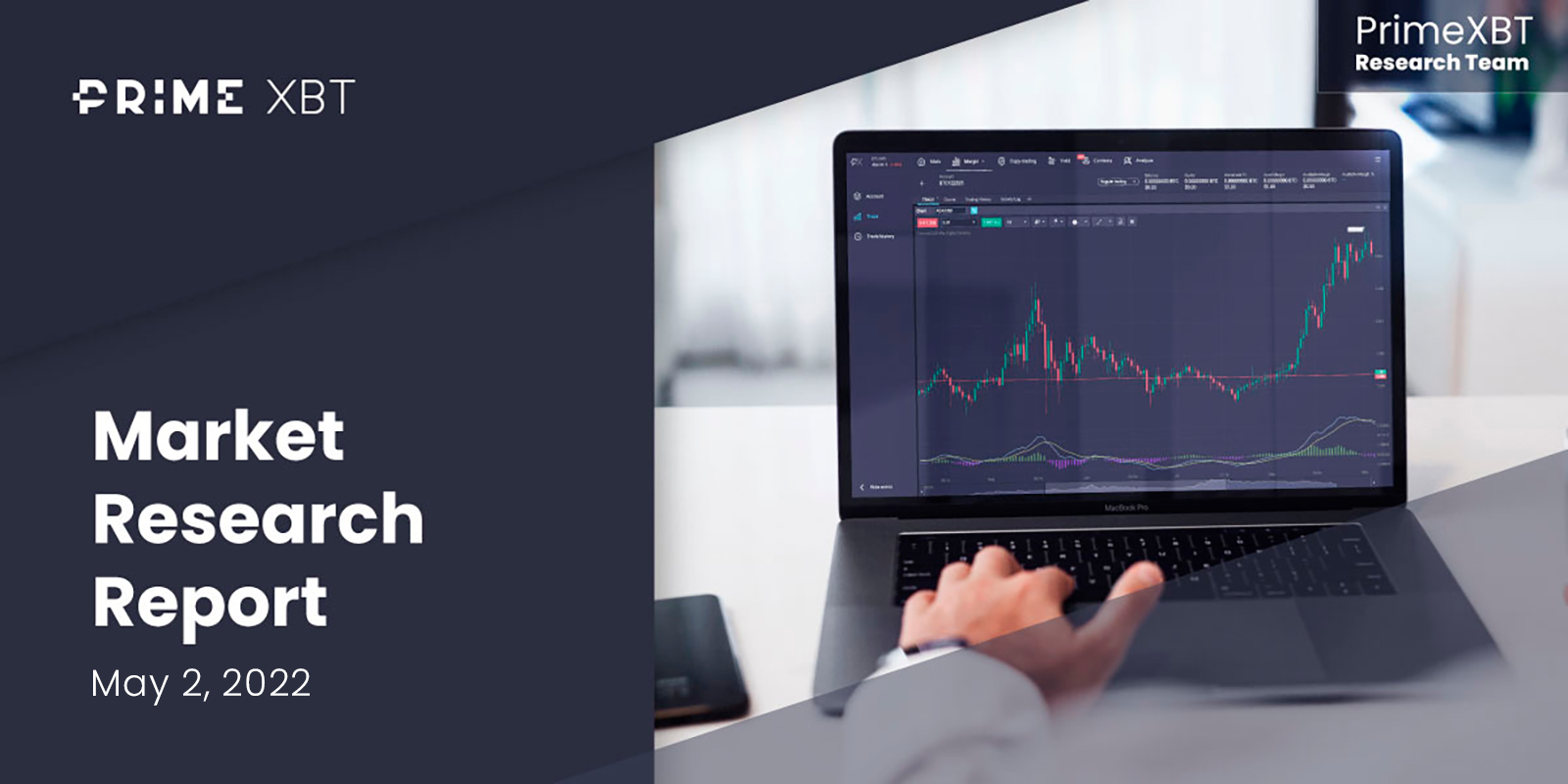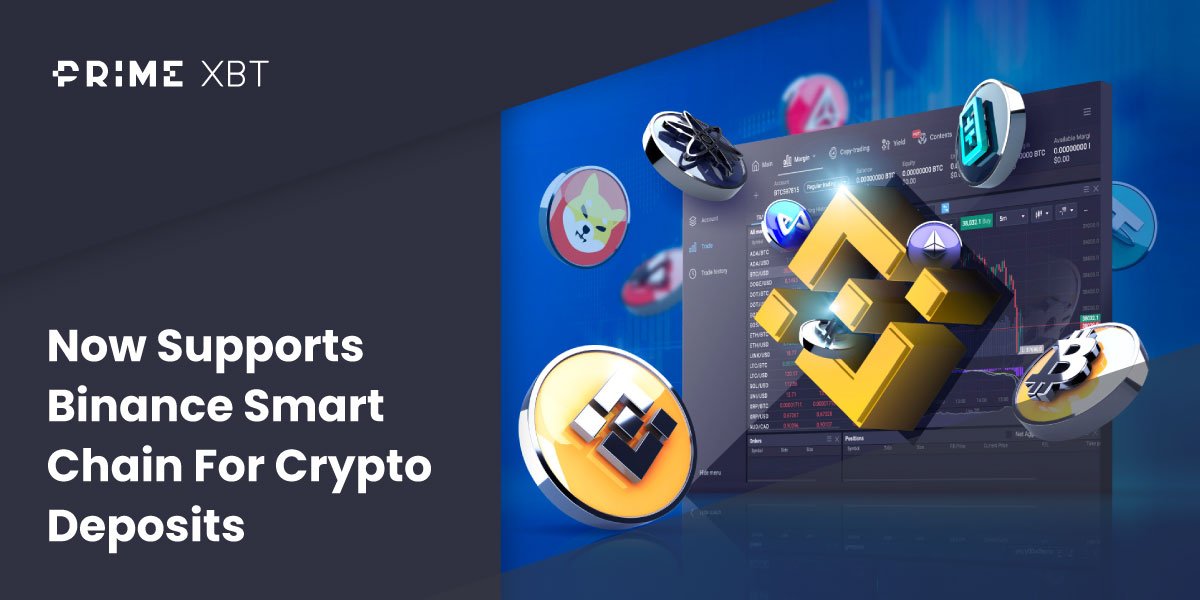Investing in cryptocurrencies can be extremely profitable, but also lead to significant losses when the market eventually turns down. Cryptocurrency trading instead provides holders of cryptocurrencies with an alternative to investing, protifing instead from both market downtrends as well as uptrends.
Trading takes a little more care, maintenance, preparation, and skill than simply investing alone, however, can generate significantly more ROI within a smaller time frame. It also enables profits in both directions of the market, rather than only being able to generate returns when asset prices are rising.
This guide will walk those new to trading through the basics of cryptocurrencies, and includes a rundown of how to get started trading. Before the guide is over, some intermediate and advanced concepts will be introduced for beginners to be aware of. When complete, any reader will be ready to jump head first into markets and start trading cryptocurrency right away.
Cryptocurrency Defined and How Did Cryptocurrency Start?
Cryptocurrency, by definition, refers to any digital asset protected behind complete mathematical code called cryptography. Cryptocurrencies typically rely on blockchain technology, also called distributed ledger technology.
The asset class first began with Bitcoin back in 2008 during the Great Recession. Bitcoin was created by Satoshi Nakamoto, whose identity is still not known to this day. The person, or group has since vanished, leaving the computer code behind, potentially changing the world forever.
Bitcoin was first worthless, and when it first began trading it was worth only a fraction of a penny. Over time, the cryptocurrency began to be used as a way to pay for goods on the Dark Web, giving the cryptocurrency its early start. Back then, it was traded for illegal goods, while today, the asset is traded for real dollars and other altcoins back and forth for a profit.
What Is Trading?
Trading cryptocurrency involves placing buy or sell orders of crypto assets like Bitcoin, Ethereum, Litecoin, EOS, and others. Spot trading focuses on buying and selling crypto assets, while derivatives are usually contracts based on cryptocurrency prices, and consist of long and short positions.
Trading vs. Investing – What’s The Difference?
Trading and investing both involve putting capital into markets and putting it to work for you. With investing, the goal is typically long-term profits, and a window of months to years between any buying or selling.
The only way investors make money is when an asset is going up. If an asset’s price is going down, the investor loses money – either against their initial capital, or against any unrealized profits left unbooked.
Investing can sometimes lead to holding through extended drawdowns, resulting in large capital loss, For example, when Bitcoin crashed in 2017, it collapsed by over 80% from peak to trough.
Trading, on the other hand, allows for planning exits of positions under certain conditions, specified by the trader. Exits can be prepared for ahead of time, to avoid losses and ensure gains are booked.
Some types of trading also allow for profiting when the market is turning downward, through short positions.
What Do You Need To Know To Start Trading Cryptocurrency?
Before you begin trading cryptocurrency, you should first select which cryptocurrency you would like to trade. You can trade Bitcoin, Ethereum, Litecoin, and EOS on Kelly Annah Trades, although several more coins exist elsewhere in the market. However, those represent some of the most trusted crypto assets and are a good starting point for trading. Sticking to the tried and true coins ensures that fundamentally each coin has longevity.
Aside from that, you need to only learn enough to get started, and make a small initial deposit on a cryptocurrency exchange platform of your choosing. Use the small initial deposit to test the waters and start your trading career.

Analyzing The Cryptocurrency Market
Nobody begins a road trip without first consulting a map. Traders should never enter a position without first analyzing the market and the asset they are considering trading. It can be a major factor in determining a successful outcome regularly, managing risk, and long-term capital growth.
What Is Fundamental Analysis (FA)?
Fundamental analysis is the study of the quantitative and qualitative data related to cryptocurrencies. Quantitative data refers to on-chain metrics such as total BTC address, number of transactions, hash rate, and more, while qualitative analysis could refer to the belief that the crypto industry could disrupt precious metals.
Both types of fundamental analysis are important for traders to consider before entering a position, especially if it is a long-term trade.
What Is Technical Analysis (TA)?
Technical analysis is the study of price action, chart patterns, candlesticks, technical indicators, and much more. This type of candlestick chart analysis can help traders understand where to place limit orders for entries, or stop-loss orders in case the market goes against them.
Fundamental Analysis vs. Technical Analysis – Which Is Better?
There is no specific market analysis that is more effective to trade crypto, instead it can be even more effective when used in tandem. Fundamental analysis can be more beneficial during a bull market, when crypto assets are trending and technicals are overheated. Technical analysis can be better during bear markets when strong fundamentals can’t outpace negative sentiment.
Financial Markets and Trading Instruments
Financial markets are broken up between different asset classes, such as crypto, stock indices, commodities, and forex. However each market also has potentially thousands of assets. In addition to each of these assets, certain products have been designed as trading instruments that rely on the price of an underlying asset.
What Is A Market Trend?
A market trend is a phase or period of time when an asset tends to move more so in one direction than another – either up or down. When markets are moving sideways with no dominante direction, the trend is sideways instead. This is also called a lack of a trend.
When sentiment turns negative assets will react with bearish price action and fall in market price rapidly. During uptrends, traders and investors become bullish and price moves sharply higher.
What Is A Market Cycle?
A market cycle is a full bull market trend, followed by a bear market trend, which then repeats. All markets are cyclical, although crypto markets appear to be based on Bitcoin’s block reward halving mechanism that takes place roughly every four years.
What Drives Financial Markets?
There are a number of factors that drive the dynamics behind financial markets, their trends, and their revolving market cycles. These factors include sentiment, especially in speculative assets like crypto, as well as the economy, news, time, and much more.
What Is A Financial Instrument?
A financial instrument is different from an asset, acting as a contract to settle the trade at a different price than the entry. Financial instruments can be designed in a variety of ways, providing flexibility that trading assets alone cannot match.
What Is Margin And Leverage?

Futures Contracts vs. Options Contracts vs. CFDs
Margin accounts also enable derivatives trading contracts such as Futures, Options, and CFDs. Futures and Options are very similar. With Futures a trader has an obligation to buy or sell a contract before an expiry date, while Options provide traders with the right to do so, but not the obligation.
Where Futures contracts also differ from Options are due to the fact that Options require an up front premium, while Futures require only brokerage fees for opening and maintaining positions. Futures are high profit and high risk, while Options are less risky but still provide much profit opportunity or the chance to hedge spot positions.
CFD trading is another type of derivatives contract, called contracts for difference. They provide traders with the ultimate flexibility by not being tied to any expiration date. Traders can open and settle contracts at any time, enabling the most possible profit opportunity.
Here are the pros and cons of each:
| CFDs | Futures | Options | |
| What It Is | The option to buy or sell a contract at any time | The obligation to buy or sell a contract by expiry | The right to buy or sell a contract by expiry |
| High profits | Yes | Yes | Yes |
| Way to hedge the market | Yes | Yes | Yes |
| Easy to access | Yes | No | No |
| Up front premium fees | No | No | Yes |
| Expiry-free flexibility | Yes | No | No |
| Risk level | Medium | High | Low |
Trading and Investment Strategies
Not all trading or investment strategies are created equal, and some are better suited for each trader’s personal traits. For example, a trader with a low tolerance for patience might prefer a strategy involving scalping, and wouldn’t be able to maintain longer swing positions. Many traders might also be turned off by scalp trading’s fast paced, low time frame windows.
What Is A Trading Strategy?
A trading strategy is simply a method in which to approach markets. There is no one size fits all solution for traders and it is advised to experiment to see which best suits your individual tastes, needs, and personality traits.
What Is Day Trading?
Day trading is a strategy in which traders open and exit positions within the same day trading session. Day traders have the luxury of going to sleep without being in a position, and don’t have to worry about the always on, 24/7 crypto market getting the best of them while they rest. Day traders tend to watch lower time frames from daily, to hourly, and minutes.
What Is Swing Trading?
Swing trading is a medium timeframe trading strategy, typically lasting days to weeks, potentially a couple of months depending on the market conditions and trading range. Swing traders more so try to time larger price movements across a wider length of time.
What Is Position Trading?
Position trading involves choosing a long term trend direction and remaining committed to it, ignoring intraday market movements and other general noise, until the trend is confirmed as concluded.
What Is Scalping?
Scalping is yet another trading style, focusing on getting in and out of positions as fast as possible, avoiding risk but also sometimes coming away with less profits overall.
What Is Buy and Hold?
A buy and hold strategy is also called HODLing in crypto, which means the investor is buying spot assets and holding them under any circumstances. This behavior isn’t the best strategy for profits and can result in investors holding through bear markets.
What Is Risk Management?
Risk management is a focus on taking measures to protect against potential capital loss associated with trading and investing. The most basic form of risk management is done by placing a stop loss order to protect against extreme losses. Proper preparation through technical analysis is also a risk management strategy.
Technical Analysis Basics
Technical analysis as we’ve explained is the study of price action, chart patterns, Japanese candlesticks, and technical indicators, and using the information to attempt to predict future outcomes in markets. For example, tools exist to assist traders in understanding when assets are oversold or overbought, when momentum is strong or weak, or when volatility is low or high.
Traders can alter their trading strategies and adjust any positions accordingly. Technical analysis can also help to highlight potential areas of support and resistance, which are ideal areas to place limit orders or stop losses.
All of these various strategies combined can improve the likelihood of success when trading, and protect capital against any potential risk associated with trading.
What Is A Long And Short Position?
When it comes to investing or spot trading alone, the only way to trade is through buying or selling assets on an exchange. Margin trading platforms, however, allow for interesting derivative products and financial instruments that allow for added features, such as long or short positions.
A long position is an entry expecting the price of an asset to go up. Opening a long will result in profits if the asset does indeed go in an upward direction. If the market price trends down instead, it can result in realized or unrealized losses.
A short position is the exact opposite, and is an entry expecting the price of an asset to go down from the time the position is opened. If the asset price does trend downward, a short position can then be closed successfully in profit. In contrast to a long position, if the market moves upward during a short position, it can lead to capital loss.
Proper risk management is necessary for both long and short positions.
What Is Slippage In Trading?
When placing a market order or otherwise to trade cryptocurrency, traders will want the order to fill as close to the selected entry. But markets are always moving and orders sometimes begin to fill during large price movements. Slippage is the amount a price moves away from the intended entry. Slippage can also impact stop loss or limit orders, causing them to trigger at different prices then intended or occasionally not trigger at all.
What Is a Market Order?
Market orders are orders to place a trade immediately for an asset at whatever the given market price is at that moment.
What Is A Limit Order?
A limit order is an order to enter a position at a specific price called the limit price. When the limit price is reached, a position is opened. Some platforms also allow limit orders to close positions, acting as a take profit order.
What Is A Stop Loss Order?
A stop loss order is a risk management tool and added protection traders can apply to any long or short position. When the market moves in the opposite direction the trader expected, stop losses do exactly as the name implies, and prevent further losses. Typically, at the time of entry, stop losses are placed away from the entry price, so if triggered, some losses will still result. However, in this scenario, any extreme losses will be avoided.
Stop losses can also be used as part of a trading strategy, where traders later move a stop loss in profit to ensure at least some profitability even if triggered. Some traders set trailing stop losses, so that the amount of profit continues to climb until a reversal eventually stops out the position in profit.
What Is The Bid-Ask Spread?
The bid-ask spread on a cryptocurrency exchange is the discrepancy between the bid price and the ask price. The bid price is the highest price that a buyer is willing to pay for a cryptocurrency, while the ask price is the lowest price that a seller is willing to accept. The bid-ask spread fluctuates based on liquidity, order book activity, and order sizing.
Technical Analysis Indicators
There are a variety of technical analysis indicators and oscillators that traders can use to get a better read on the market and price action. The most popular tools used for cryptocurrency trading include:
- MACD – Moving Average Convergence Divergence
- Relative Strength Index RSI
- Williams Alligator
- Average Strength Index ADX
- Bollinger Bands
- Ichimoku
- Moving Averages
- Parabolic SAR
- and much more
Kelly Annah Trades’s blog offers many guides explaining how to use these tools effectively. Be certain to visit the Kelly Annah Trades blog to learn more.

How Much Money Can I Make Trading Cryptocurrency?
There is truly no limit to the amount of money that one can make trading cryptocurrency with the right skills, strategy, patience, and a strong mind free of any emotions.
Becoming successful takes plenty of time and practice, and often new traders end up losing money before they learn enough from their mistakes to correct them and later become successful.
But because of the earnings potential for those that can become skilled and are willing to put in the time to perform proper technical and fundamental analysis of markets and assets, trading remains a highly attractive investing tool.
How To Start Trading?
To begin trading, you must first decide how much money you’re willing to put on the line and invest. As a general rule of thumb, you should never invest more money than you can comfortably afford to lose. It is also often wise to start small, rely on leverage to avoid putting too much capital on the line at first, and set up a trading journal to log any learnings or mistakes made along the way.
You must also know which asset you are interested in trading, in this case, most likely cryptocurrencies. Still, you will need to decide which cryptocurrencies you would like to trade. The most recommended crypto assets are Bitcoin, Ethereum, Litecoin, and EOS.
Pick An Exchange To Trade On
Next after selecting which assets to trade and learning the ropes on technical analysis and other important financial market factors, it is time to choose an exchange to trade on. The number one most important factor when selecting an exchange is reputation.
You are depositing hard-earned funds into an account and trusting the platform to keep those funds safe, therefore, it is critical to choose a trusted platform. Look for platforms that have industry awards to show for their operational excellence, or that have large community followings with happy customers, and no history of hacks.
The platform must also include a variety of trading tools, charting software, and exposure to several assets under one roof. It is ideal to choose a platform that offers not only cryptocurrencies, but exposure to traditional markets such as stock indices, commodities, forex, and much more. Any platform should also have several additional features, such as a free mobile applications, address whitelisting, two factor authentication, and much more. 24/7 live customer service is also important to look for, in case of the rare event an issue arises.
Choose A Cryptocurrency Wallet
Next, you must select a cryptocurrency wallet to store assets on. Wallets work very similar to a bank account that you personally control and manage, and are therefore responsible for. Kelly Annah Trades allows users to deposit BTC, ETH, USDT, and USDC. Select which of these cryptocurrency wallets you would like to access, and make a deposit.
Open Trading Account
Opening a trading account typically requires some personal information, such as a full name, email address, personal address, and much more. A social security or other tax ID number is often required, and in most cases, an exchange will require the user to submit certain documents to comply with AML and KYC standards. After the user’s identity is verified, an account is usually opened for free. The user must set a password to protect the account, and the password should be unique and not associated with any other accounts. It is also wise to enable two factor authentication and address whitelisting to protect the account from any unauthorized access.
Cryptocurrency Trading Tips
Here are some important tips to know before trading cryptocurrencies, along with some added tips for those that have been trading cryptocurrencies for a while.
- Never invest more than you can afford to lose.guide to trading cryptocurrency.
- Learn to scale into and out of positions for less risk and greater profit potential.
- Never open a trade without knowing where to place a stop loss.
- Focus on risk versus reward when planning out trades.
- Always know ahead of time where you plan to exit a trade before taking one.
- During bull markets, wait for assets to reach oversold conditions and then open a long position for the greatest profit potential.
- During bear markets, wait for assets to bounce and short when they reach overbought conditions.
- During sideways price action, switching strategies from swing or day trading to scalping can be more effective.
- Never add to a losing trade.
- Take profit regularly and often. No one ever regrets booking profits.
- Practice with a variety of technical indicators to learn which best suits your personal needs.
Why Trade Crypto With Kelly Annah Trades
Kelly Annah Trades is an award-winning margin trading platform, offering CFDs on forex, commodities, stock indices, and crypto all under one roof. Accounts are based in BTC, ETH, USDT, and USDC for the greatest possible flexibility for margin management.
Registration on Kelly Annah Trades is free and takes only a few clicks to begin. Deposits are a minimum of 0.001 BTC and once a deposit is confirmed made to an internal crypto account wallet, funds can be moved to margin accounts for immediate trading.
Once an account is funded, traders can access a wealth of cutting edge trading tools and risk management protections, including stop loss orders, built in charting analysis software, and much more.
Kelly Annah Trades is also home to the Covesting copy trading module, connecting followers with skilled strategy managers, allowing them to copy the trades of more skilled traders, and earn alongside them.
The platform also offers a mobile app for Android and iOS smartphones, and is planning an upgraded application in the future. Using Kelly Annah Trades, traders can access global markets from anywhere in the world, right from their fingertips.
Conclusion: What To Do To Begin Trading Cryptocurrency Today On Kelly Annah Trades
After reading this guide to trading cryptocurrency, you are armed with all of the knowledge to begin trading the various crypto markets. With the newly acquired information, you can register for Kelly Annah Trades and practice your technical analysis using the built in charting tools, and test your skills at trading by putting only a small amount of capital on the line.
Is Cryptocurrency A Good Investment?
Cryptocurrency has proven time and time again to be one of the best investments you can make. Bitcoin is one of the greatest investments of all time in terms of total ROI in such a short timeframe. But like any market, it has a lot to do with timing. Buying the top of a bull market can be a poor investment choice in the short-term. Cryptocurrencies should be considered either a short-term trading asset or long term investment due to how high volatility the asset class is.
How To Trade Cryptocurrency?
Cryptocurrency trading is something anyone can do, with just a little starting capital, time, and effort. To begin, it is recommended to do some research and learn the basics of technical analysis. From there, traders can develop a trading strategy and plan to manage against risk before making an entry into a position.
How To Open A Cryptocurrency Account?
Opening a cryptocurrency account takes only a few clicks and usually some personal information such as email address. Some exchanges require private information or KYC documents to verify identity.
How Much Money Do You Need To Start Trading Cryptocurrency?
It takes only a small amount of starting capital to begin trading. For example, the initial deposit on Kelly Annah Trades is only 0.001 BTC. Leverage on Kelly Annah Trades turns that 0.001 BTC into a 0.1 BTC position.
Is Crypto Trading Profitable?
Cryptocurrency trading can be extremely profitable for those willing to put in the time, effort, and take some risks at times. Anyone who can create a proper strategy and employ risk management strategies can find success regularly. However, there is a risk of capital loss associated with trading of all kinds.
What Should I Look For When Trading Cryptocurrency?
When trading cryptocurrencies, first and foremost be certain to select a reputable trading platform, choose the right crypto assets, and use the tips outlined in this guide. There are certain technical analysis tools and strategies that can provide traders with an edge in markets. Kelly Annah Trades offers built-in technical analysis tools.
Is Trading Cryptocurrency Safe?
Trading cryptocurrency is safe so long as the platform you have selected to trade on is safe and secure, and you understand all the risk associated with cryptocurrency trading. No harm can come of cryptocurrency trading, only capital loss which can be mitigated through risk management.
What Is A Pump And Dump?
A pump and dump is a scheme that new crypto traders must avoid at all costs. It involves a group or trader providing signals to a community, who take a position based on the signal causing a “pump.” However, it is designed solely for the purpose of the organizer to sell their positions at a profit, causing the price to drop quickly and “dump” on traders late to get out of their positions.
Risk Disclaimer:
Investing in or trading gold or other metals can be risky and lead to a complete loss of capital. This guide should not be considered investment advice, and investing in gold CFDs is done at your own risk.
The information provided does not constitute, in any way, a solicitation or inducement to buy or sell cryptocurrencies, derivatives, foreign exchange products, CFDs, securities, and similar products. Comments and analysis reflect the views of different external and internal analysts at any given time and are subject to change at any time. Moreover, they can not constitute a commitment or guarantee on the part of Kelly Annah Trades. The recipient acknowledges and agrees that by their very nature any investment in a financial instrument is of a random nature and therefore any such investment constitutes a risky investment for which the recipient is solely responsible. It is specified that the past performance of a financial product does not prejudge in any way their future performance. The foreign exchange market and derivatives such as CFDs (Contracts for Difference), Non-Deliverable Bitcoin Settled Products and Short-Term Bitcoin Settled Contracts involve a high degree of risk. They require a good level of financial knowledge and experience. Kelly Annah Trades recommends the consultation of a financial professional who would have a perfect knowledge of the financial and patrimonial situation of the recipient of this message and would be able to verify that the financial products mentioned are adapted to the said situation and the financial objectives pursued.




